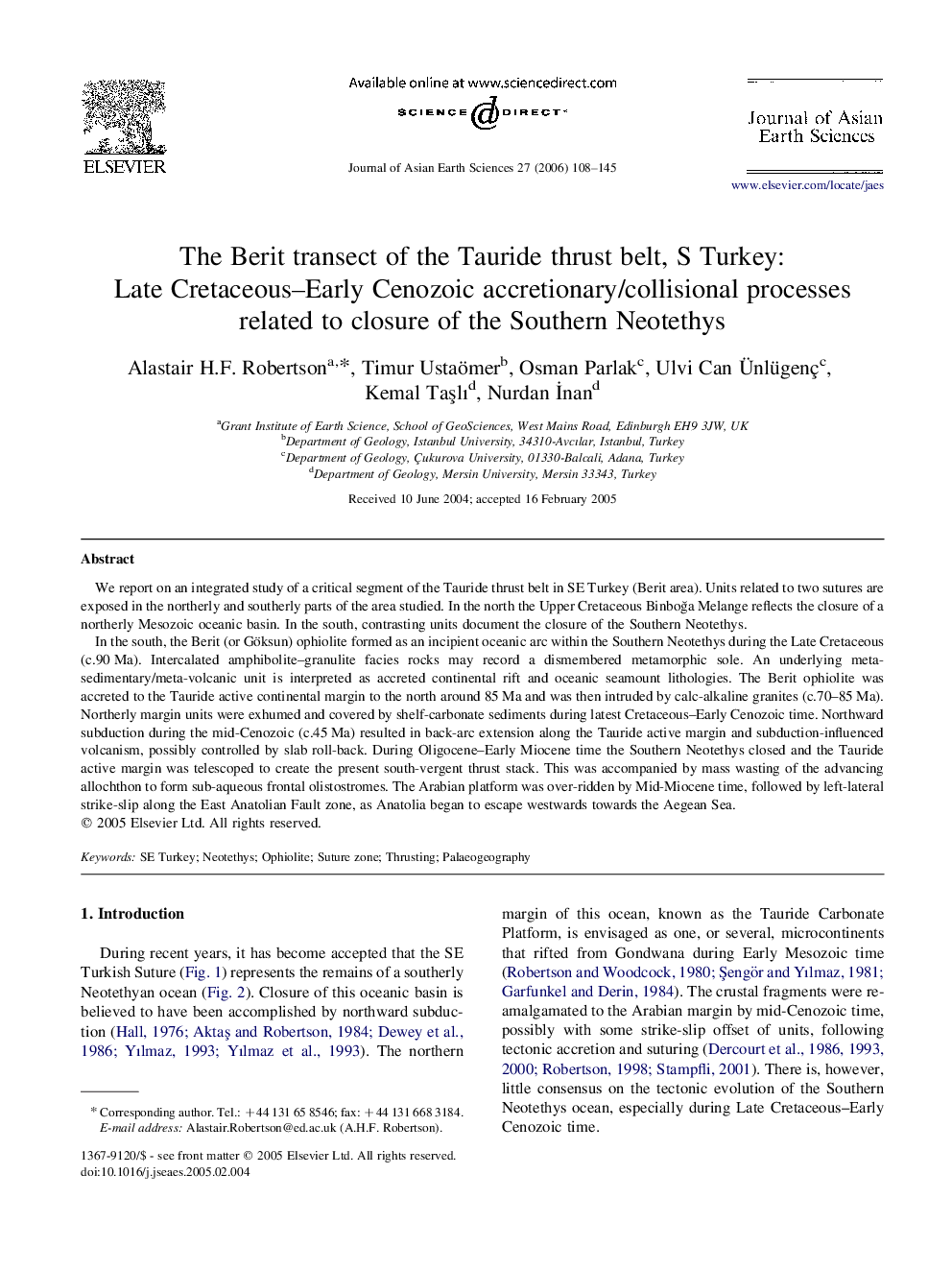| Article ID | Journal | Published Year | Pages | File Type |
|---|---|---|---|---|
| 4732704 | Journal of Asian Earth Sciences | 2006 | 38 Pages |
We report on an integrated study of a critical segment of the Tauride thrust belt in SE Turkey (Berit area). Units related to two sutures are exposed in the northerly and southerly parts of the area studied. In the north the Upper Cretaceous Binboğa Melange reflects the closure of a northerly Mesozoic oceanic basin. In the south, contrasting units document the closure of the Southern Neotethys.In the south, the Berit (or Göksun) ophiolite formed as an incipient oceanic arc within the Southern Neotethys during the Late Cretaceous (c.90 Ma). Intercalated amphibolite–granulite facies rocks may record a dismembered metamorphic sole. An underlying meta-sedimentary/meta-volcanic unit is interpreted as accreted continental rift and oceanic seamount lithologies. The Berit ophiolite was accreted to the Tauride active continental margin to the north around 85 Ma and was then intruded by calc-alkaline granites (c.70–85 Ma). Northerly margin units were exhumed and covered by shelf-carbonate sediments during latest Cretaceous–Early Cenozoic time. Northward subduction during the mid-Cenozoic (c.45 Ma) resulted in back-arc extension along the Tauride active margin and subduction-influenced volcanism, possibly controlled by slab roll-back. During Oligocene–Early Miocene time the Southern Neotethys closed and the Tauride active margin was telescoped to create the present south-vergent thrust stack. This was accompanied by mass wasting of the advancing allochthon to form sub-aqueous frontal olistostromes. The Arabian platform was over-ridden by Mid-Miocene time, followed by left-lateral strike-slip along the East Anatolian Fault zone, as Anatolia began to escape westwards towards the Aegean Sea.
